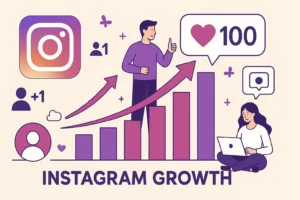On-page Search Engine Optimization (SEO) is a critical aspect of any successful digital marketing strategy. It involves optimizing various elements within your website to improve its visibility and ranking on search engines like Google. By focusing on on-page SEO, you can ensure that your content is easily discoverable and relevant to users’ search queries, ultimately driving more organic traffic to your site.
What is On-Page SEO?
On-page SEO refers to the practice of optimizing individual web pages to rank higher in search engines and earn more relevant traffic. This involves tweaking the content and HTML source code of a page, as opposed to off-page SEO, which involves external factors like backlinks. Key elements of on-page SEO include title tags, meta descriptions, header tags, keyword placement, internal linking, and image optimization.
Importance of On-Page SEO
On-page SEO is crucial for several reasons:
- Enhanced Visibility: Properly optimized pages are more likely to appear in search engine results, increasing your website’s visibility.
- Better User Experience: On-page SEO improves the overall user experience by making your site more navigable and content more relevant.
- Higher Conversion Rates: When users find relevant and high-quality content, they are more likely to convert into customers.
- Long-Term Benefits: Unlike paid advertising, the effects of on-page SEO can last for a long time, providing ongoing traffic and engagement.
Keyword Research
Why Keywords Matter
Keywords are the backbone of SEO. They are the phrases and terms that users enter into search engines when looking for information. By targeting the right keywords, you can connect your content with the queries of your target audience.
Tools for Keyword Research
Several tools can help you identify valuable keywords for your content, including:
- Google Keyword Planner: Offers insights into keyword volume and competition.
- Ahrefs: Provides comprehensive keyword analysis and competitor insights.
- SEMrush: Offers a wide range of tools for keyword research and SEO analysis.
Choosing the Right Keywords
When selecting keywords, aim for a mix of short-tail and long-tail keywords. Short-tail keywords are broader and have higher search volumes, while long-tail keywords are more specific and have less competition. Focus on keywords with a good balance of search volume and competition.
Title Tags
Best Practices for Title Tags
Title tags are one of the most important on-page SEO elements. They appear as the clickable headline in search engine results and should be:
- Unique: Each page should have a distinct title tag.
- Descriptive: Clearly describe the content of the page.
- Keyword-Rich: Include your primary keyword.
- Concise: Keep it under 60 characters to ensure it displays properly in search results.
Common Mistakes to Avoid
- Keyword Stuffing: Overloading the title with keywords can appear spammy and negatively impact your ranking.
- Vague Titles: Ensure your title accurately reflects the page content.
- Duplicated Titles: Avoid using the same title tag for multiple pages.
Meta Descriptions
Importance of Meta Descriptions
Meta descriptions are the brief summaries that appear under the title in search results. They don’t directly affect rankings but can influence click-through rates.
How to Write Effective Meta Descriptions
- Length: Keep it under 160 characters.
- Keywords: Include relevant keywords naturally.
- Compelling: Write a description that entices users to click on your link.
- Unique: Ensure each page has a distinct meta description.
Header Tags (H1, H2, H3, H4)
Structuring Your Content with Header Tags
Header tags (H1, H2, H3, H4) are used to structure your content and make it easier to read. They also help search engines understand the hierarchy of your content.
- H1 Tag: Should contain your main keyword and be used only once per page.
- H2 Tags: Use for main sections of your content.
- H3 and H4 Tags: Use for sub-sections within your H2 sections.
Impact of Header Tags on SEO
Proper use of header tags improves readability and SEO. They help search engines understand the structure of your content and can improve your chances of ranking for featured snippets.
URL Structure
Creating SEO-Friendly URLs
URLs should be:
- Short: Easy to read and type.
- Descriptive: Include keywords that reflect the page content.
- Consistent: Follow a consistent URL structure across your site.
Examples of Good and Bad URLs
- Good:
example.com/seo-tips - Bad:
example.com/index.php?id=123
Internal Linking
Benefits of Internal Linking
Internal links connect your content and provide a clear path for search engines to follow. They help distribute page authority across your site and improve navigation.
Best Practices for Internal Linking
- Descriptive Anchor Text: Use text that clearly describes the linked page.
- Relevance: Link to related content to keep users engaged.
- Working Links: Regularly check for and fix broken links.
Content Quality
Importance of High-Quality Content
High-quality content is essential for user engagement and SEO. It should be:
- Original: Unique and not duplicated from other sources.
- Informative: Provide value and address the needs of your audience.
- Engaging: Written in a way that keeps readers interested.
How to Create Engaging Content
- Research: Thoroughly research your topic to provide accurate information.
- Format: Use short paragraphs, bullet points, and images to break up the text.
- Update: Regularly update your content to keep it relevant.
Image Optimization
How to Optimize Images for SEO
Images can enhance your content but must be optimized for SEO:
- Descriptive File Names: Use keywords in your image file names.
- Compression: Reduce file size to improve page load times.
- Alt Text: Include descriptive alt text with relevant keywords.
Alt Text and Its Importance
Alt text helps search engines understand your images and improves accessibility for users with visual impairments. It should be concise and descriptive.
Mobile-Friendliness
Importance of Mobile Optimization
With most searches now conducted on mobile devices, ensuring your site is mobile-friendly is crucial for SEO.
Tools to Check Mobile-Friendliness
Use tools like Google’s Mobile-Friendly Test to evaluate and improve your site’s mobile optimization.
Page Speed
How Page Speed Affects SEO
Page speed is a critical ranking factor. Slow-loading pages can lead to higher bounce rates and lower rankings.
Tips to Improve Page Speed
- Optimize Images: Compress images without sacrificing quality.
- Browser Caching: Enable browser caching to reduce load times for returning visitors.
- Content Delivery Network (CDN): Use a CDN to deliver content faster to users across different locations.
User Experience (UX)
Role of UX in On-Page SEO
A positive user experience is essential for SEO. It helps keep visitors on your site longer, reducing bounce rates and improving engagement.
How to Enhance User Experience on Your Website
- Easy Navigation: Ensure your site is easy to navigate with a clear structure.
- Clean Design: Use a clean, uncluttered design to improve readability.
- Avoid Intrusive Ads: Limit the use of intrusive ads that can disrupt the user experience.
Conclusion
On-page SEO is a vital component of your overall SEO strategy. By optimizing your content, title tags, meta descriptions, headers, images, and more, you can improve your site’s visibility and ranking on search engines. Implementing these strategies will not only enhance your search engine rankings but also provide a better experience for your users, leading to higher engagement and conversions.
FAQs
1. What is the most important on-page SEO factor?
High-quality content is often considered the most crucial element for on-page SEO.
2. How often should I update my on-page SEO?
Regularly review and update your on-page SEO every few months to ensure it remains effective and relevant.
3. Can I do on-page SEO myself, or do I need a professional?
You can handle many on-page SEO tasks yourself, but hiring a professional ensures thorough optimization and can save you time.
4. Does on-page SEO differ for mobile and desktop?
The core principles are the same, but mobile optimization is critical due to the growing number of mobile users.
5. How do I know if my on-page SEO is working?
Use tools like Google Analytics and Google Search Console to track your site’s performance and measure the effectiveness of your on-page SEO efforts.





